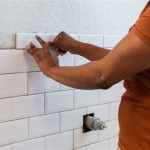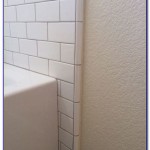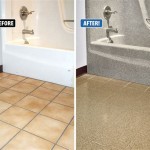Can You Paint Existing Floor Tiles?
Painting existing floor tiles is a cost-effective way to update a space without the disruption and expense of complete tile replacement. While possible, careful consideration of the tile type, location, and paint selection is crucial for a successful and durable finish. Different tile types react differently to paint, and high-traffic areas require specialized paints to withstand wear and tear.
Ceramic and porcelain tiles, due to their smooth, non-porous surfaces, present the most significant challenge for paint adhesion. Adequate preparation is paramount. Thorough cleaning is the first step, removing any dirt, grime, or mildew that might compromise the bond between the paint and the tile. A degreasing cleaner is recommended to eliminate any residual grease or soap scum. After cleaning, light sanding with fine-grit sandpaper creates a slightly textured surface, promoting better paint adhesion. A primer designed for glossy surfaces should be applied before painting to further enhance adhesion.
Porcelain tiles, being denser than ceramic tiles, may require a specialized primer formulated for bonding to non-porous surfaces. Consult with paint professionals to select the appropriate primer and paint combination for optimal results. Using a high-quality, durable epoxy paint designed for floors is essential for longevity, particularly in high-traffic areas. Epoxy paints offer superior resistance to abrasion, chipping, and chemicals, making them well-suited for bathroom and kitchen floors.
Natural stone tiles, such as slate, travertine, and granite, generally do not require priming due to their porous nature. However, they may need sealing after painting to protect the stone and enhance the paint’s durability. It’s recommended to consult with a professional when working with natural stone to ensure the chosen paint and sealant are compatible with the specific type of stone.
Choosing the right paint is vital for the success of the project. Latex-based acrylic paints are commonly used for floor tiles due to their durability, water resistance, and ease of application. Epoxy paints, while more challenging to apply, offer superior durability and are ideal for high-traffic areas. Two-part epoxy paints, consisting of a resin and a hardener, offer the highest level of durability but require precise mixing and application. Regardless of the paint type, selecting a paint specifically formulated for floors is essential for long-lasting results.
Proper application techniques are also crucial for achieving a professional-looking finish. Thin, even coats are preferred over thick coats, which are prone to cracking and peeling. Multiple coats may be necessary to achieve full coverage and desired color intensity. Allowing sufficient drying time between coats as per the manufacturer's instructions is essential for proper curing and adhesion.
The location of the tiles significantly influences the paint selection and preparation process. Bathroom floors, exposed to moisture and humidity, require moisture-resistant paints and primers. Kitchen floors, prone to spills and grease, benefit from paints that are easy to clean and resistant to staining. High-traffic areas demand highly durable paints, such as epoxy paints, to withstand wear and tear. Conversely, low-traffic areas, such as guest bathrooms or laundry rooms, may tolerate less durable paint options.
Maintaining painted floor tiles requires regular cleaning and care. Avoid harsh chemicals and abrasive cleaners, which can damage the paint. Sweeping or vacuuming regularly removes loose dirt and debris, preventing scratching. A damp mop with a mild cleaning solution is sufficient for most cleaning needs. Avoid excessive moisture, especially around grout lines, to prevent water damage.
While painting floor tiles offers a budget-friendly update, it is essential to acknowledge that painted surfaces may not be as durable as professionally glazed or refired tiles. The painted finish can be susceptible to chipping, scratching, and fading over time, especially in high-traffic areas. Regular touch-ups and eventual repainting may be necessary to maintain the desired aesthetic.
Before embarking on a tile painting project, carefully assess the existing tile condition. Cracked, chipped, or loose tiles are not suitable candidates for painting. Addressing these underlying issues before painting is crucial for a successful and long-lasting finish. Repairing or replacing damaged tiles ensures a smooth, stable surface for proper paint adhesion.
Ventilation is crucial during the painting process, especially when using solvent-based paints. Adequate ventilation helps dissipate fumes and ensures proper drying. Open windows and doors or use fans to circulate air throughout the workspace. Wear appropriate safety gear, such as gloves and a respirator, to protect against fumes and potential skin irritation.

How To Paint A Tile Floor Steps For Success Artsy Rule

Easy Update For Outdated Flooring How To Paint A Tile Floor Before And After

How To Paint A Tile Floor Steps For Success Artsy Rule

How To Paint Tile Floor Angela Marie Made

How To Paint Tile Floors So They Last Pine And Poplar

How To Paint Your Ceramic Floor Tile The Lettered Cottage

Refresh Your Bathroom Tile With Grout Paint Arched Manor

How To Paint Tile Floor Angela Marie Made

How To Paint Tile Floors So They Last Pine And Poplar

Diy Tile Painting Byot 1
Related Posts








